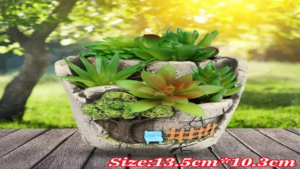Discover the secrets to selecting the ideal home decor flower pots that complement your home. Learn about the different types, sizes, and materials, and find out how to style them for maximum impact.
Introduction: Home Decor Flower Pots
Welcome to our comprehensive guide on how to choose home decor flower pots for your home. Whether you’re a seasoned gardener or a beginner, selecting the right flower pots can be a daunting task. With so many options available, it’s easy to get overwhelmed. But don’t worry, we’ve got you covered. In this article, we’ll take you through everything you need to know to make an informed decision.
Types of Flower Pots
When it comes to flower pots, there are several types to choose from, including:
- Ceramic pots
- Plastic pots
- Terracotta pots
- Concrete pots
- Metal pots
Ceramic Pots
Ceramic pots are a popular choice for indoor and outdoor decor. They come in a variety of shapes, sizes, and colors, making them a versatile option. Ceramic pots are also durable and can withstand extreme temperatures.
Plastic Pots
Plastic pots are a lightweight and affordable option. They are perfect for indoor use and can be used for both flowers and plants. Plastic pots are also easy to clean and maintain.
Terracotta Pots
Terracotta pots are a classic choice for outdoor decor. They are made from natural clay and are porous, allowing for good air circulation and water drainage. Terracotta pots are also a great option for succulents and cacti.
Concrete Pots
Concrete pots are a modern and stylish option for indoor and outdoor decor. They are heavy and durable, making them a great choice for larger plants. Concrete pots are also weather-resistant and can withstand extreme temperatures.
Metal Pots
Metal pots are a unique and contemporary option for indoor and outdoor decor. They come in a variety of finishes, including copper, brass, and stainless steel. Metal pots are also a great option for adding a pop of color to your decor.
Choosing the Right Size
When it comes to choosing the right size flower pot, it’s important to consider the size of the plant and the pot’s drainage capabilities. A pot that is too small can restrict the plant’s growth, while a pot that is too large can lead to overwatering.
Indoor Plants
For indoor plants, it’s best to choose a pot that is 1-2 inches larger than the current pot. This will allow for proper root growth and water drainage.
Outdoor Plants
For outdoor plants, it’s best to choose a pot that is 2-4 inches larger than the current pot. This will allow for proper root growth and water drainage.
Choosing the Right Material
When it comes to choosing the right material for your flower pot, it’s important to consider the plant’s needs and the location of the pot.
Porous Materials
Porous materials, such as terracotta and unglazed ceramic, are great for plants that require good air circulation and water drainage.
Non-Porous Materials
Non-porous materials, such as plastic and glazed ceramic, are great for plants that require less watering and moisture retention.
Styling Flower Pots
When it comes to styling flower pots, it’s important to consider the overall decor of your home. Here are some tips for styling your flower pots:
- Group pots of different sizes and shapes together for a dynamic look
- Use a variety of materials, such as ceramic, plastic, and metal, to add texture and interest
- Add decorative elements, such as ribbons, stickers, and paint, to personalize your pots
- Use a variety of colors to complement your home’s decor
What are the different types of home decor flower pots?
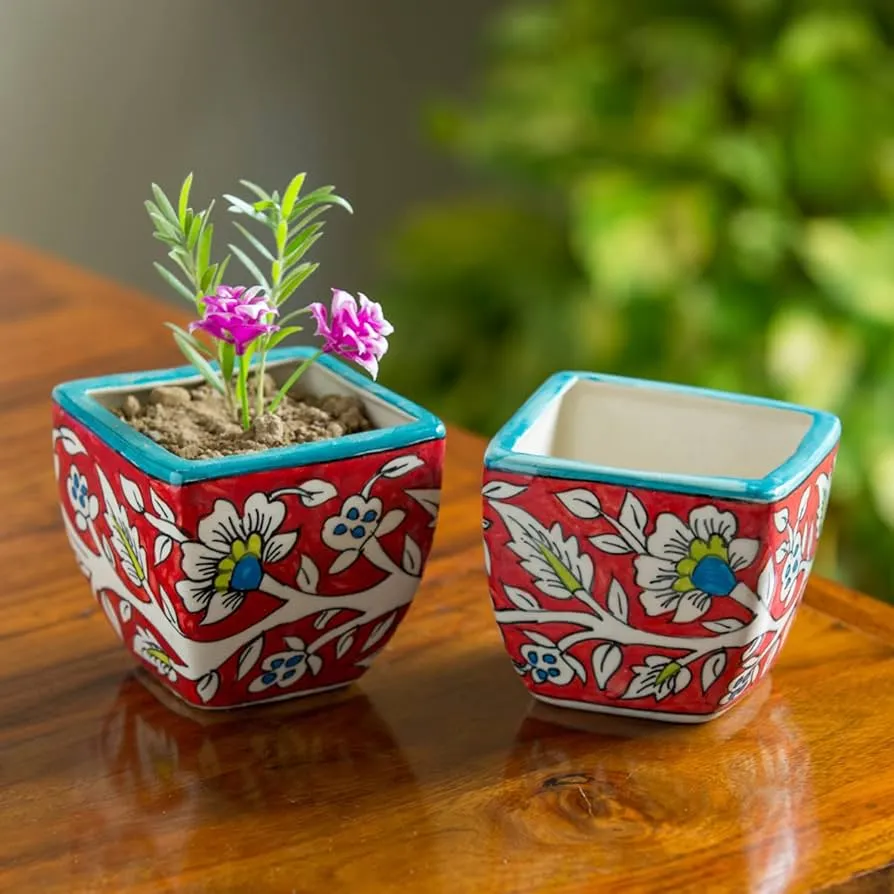
The different types of home decor flower pots include clay pots, plastic pots, wooden pots, ceramic pots, composite pots, metal pots, concrete pots, vertical pots and cabinets, hanging pots, railing planters, decorative pots and urn planters, and coir pots.
Clay pots are made of natural material that allows roots to breathe and have good moisture-wicking properties, but they are heavy and can break if carried or dropped.
Plastic pots are lightweight and inexpensive, but they can overheat in the sun and affect plants negatively.
Wooden pots give a natural and traditional look and can last for many years if properly cared for.
Ceramic pots are available in various designs and colors, but they are fragile and require care when handling. Composite pots are made from a mixture of materials for strength and lightweight, with excellent weather resistance and available in various styles.
Metal pots add a modern or industrial look, but the metal can heat up in the sun and oxidize over time.
Concrete pots are durable and weather-resistant, with a natural, earthy appearance and can support heavy plants. Vertical pots and cabinets are specifically designed for creating vertical gardens and are ideal for small spaces such as balconies or small yards.
Hanging pots do not need much space and are ideal for growing beautiful flowers in small spaces, but they need regular watering due to low water retention capacities. Railing planters provide an easy and effective way to grow plants without much space and are ideal for growing different flowers like roses, marigold, and lilies.
Decorative pots and urn planters are eye-catching and provide an enhanced look to the garden, and large-sized urn planters may be difficult to move but can retain more water for a long time and provide great support to the plants.
Plastic pots are lightweight and available in colorful options, while metal pots give an elegant and unique look but may get very hot when placed under the sun2. Coir pots are made from coconut fibre and are an excellent option if looking for biodegradable planters, offering a great medium for the growth of plants with high porosity and efficient drainage.
How to choose the right size of flower pot for your home decor?
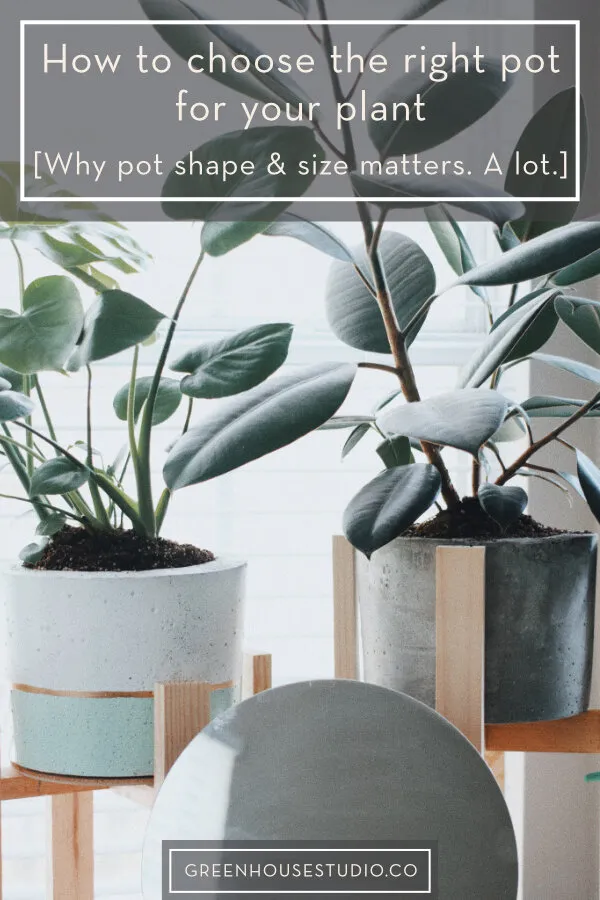
To choose the right size of flower pot for your home decor, consider the following factors:
- Plant size: The diameter of the pot should be at least 2 inches wider than the plant’s diameter to allow for root development and prevent overcrowding.
- Root system: Consider the depth and width of the plant’s root system when selecting a pot. Shallow-rooted plants require shorter and wider pots, while deep-rooted plants need taller and narrower pots.
- Drainage: Ensure the pot has proper drainage holes to prevent waterlogging and root rot. A pot without drainage holes can lead to overwatering and harm the plant’s health.
- Material: Different materials have different properties, such as terra cotta being porous and allowing for better airflow, while plastic pots are lightweight and inexpensive.
- Aesthetics: Choose a pot that complements your home decor and the plant’s appearance. Consider the color, texture, and style of the pot.
When repotting a plant, choose a pot that is 2-4 inches larger in diameter than the current pot to provide enough space for the roots to grow. However, avoid overpotting, as larger pots can retain too much moisture and lead to root rot4.In summary, choosing the right size of flower pot for your home decor involves considering the plant’s size, root system, drainage needs, material preferences, and aesthetic appeal. By taking these factors into account, you can ensure your plants thrive and add beauty to your home.
What are the best materials for home decor flower pots?
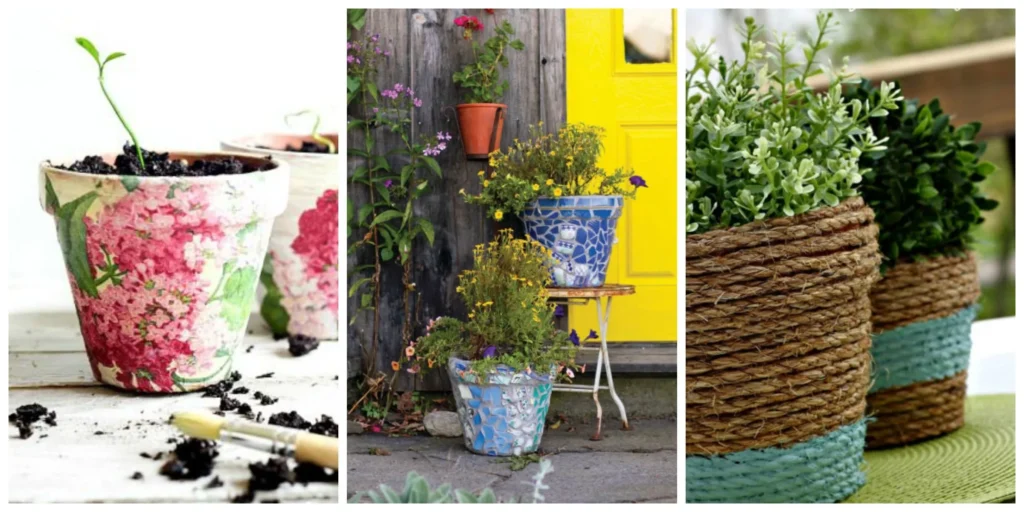
The best materials for home decor flower pots include:
- Ceramic: Ceramic pots are popular for their diverse range of styles, patterns, and designs. They are attractive, come in a variety of colors, and are excellent for retaining moisture, making them ideal for moisture-loving plants like ferns.
- Terracotta: Terracotta pots are well-known for their porous nature, allowing air and moisture to move in and out, which is crucial for plant health. They are heavier than wood or plastic planters, making them less likely to tip over if your plant is top-heavy.
- Metal: Metal planters, such as iron, stainless steel, and aluminum, are great for creating a modern or industrial look in your home or garden. They are strong, durable, and can add a unique aesthetic to your decor.
- Plastic: Plastic flower pots are lightweight, long-lasting, and resist breaking. They come in a variety of styles and can be manufactured to resemble other materials like wood or stone. Plastic pots are affordable and easy to maintain, making them a practical choice for home decor.
- Wood: Wood planters acquire character with age and add rustic style to your plantings. They offer good drainage and natural wood retains moisture, making them a suitable option for various plants.
Each material has its own set of advantages and considerations, so choosing the best material for your home decor flower pots depends on factors such as plant needs, aesthetics, durability, and maintenance preferences.
What are the pros and cons of using ceramic pots for home decor?
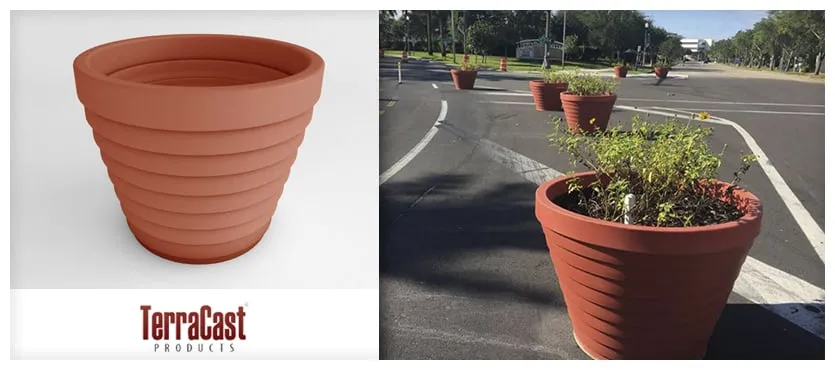
Pros and Cons of Using Ceramic Pots for Home Decor
Ceramic pots are a popular choice for home decor due to their aesthetic appeal and functionality. Here are the pros and cons of using ceramic pots for home decor based on the provided sources:
Pros:
- Aesthetic Appeal: Ceramic pots are beautiful and elegant, adding a touch of sophistication to any space.
- Porous Material: Ceramic pots are porous, allowing for good airflow and water absorption, which benefits plant health.
- Root Revitalization: The porous nature of ceramic pots stimulates root growth by allowing airflow into the soil.
- Moisture Mitigation: Ceramic pots are excellent at absorbing excess moisture, reducing the risk of overly wet soil and root rot.
Cons:
- Drainage Drawbacks: Some ceramic pots may have fewer drainage holes, leading to water flow issues and over-absorption.
- Special Care Required: Ceramic pots require careful handling to prevent chips, discoloration, and damage to the nonstick coating.
- Maintenance: Ceramic pots may require more frequent watering compared to other materials, posing a challenge for plants that need consistent moisture levels.
- Durability: Ceramic pots are not as durable as other materials, and the coating can wear out over time, affecting their nonstick properties.
In conclusion, while ceramic pots offer aesthetic appeal and benefits for plant health, they require special care, maintenance, and attention to ensure longevity and optimal performance in home decor settings.
What are the benefits of using ceramic pots for home decor?

Ceramic pots offer several benefits for home decor. Firstly, they are available in a wide variety of shapes, sizes, and designs, making it easy to find a pot that matches your personal style and complements your home decor. Ceramic pots are also durable and can support top-heavy plants due to their heavier weight and more substantial build compared to plastic containers.
In terms of functionality, ceramic pots are porous, which allows for good airflow and water absorption, benefiting plant health. This porous nature also facilitates essential plant nutrients, allowing them to course through the plant and its roots, providing a healthy environment for the plant to grow. Ceramic pots are also excellent at absorbing excess moisture, reducing the risk of overly wet soil and root rot.
Moreover, ceramic pots are eco-friendly and can help shield plants from drastic and sudden temperature shifts, protecting them from excess heat absorption during hot days and helping to retain moisture in the soil on intensely hot days. Ceramic pots can be used both indoors and outdoors, making them a versatile option for any space.
In summary, ceramic pots offer several benefits for home decor, including a wide variety of design options, durability, porousness for better airflow and water absorption, eco-friendliness, and versatility for indoor and outdoor use.
How to care for hanging pots in your home decor?

To care for hanging pots in your home decor, consider the following tips:
- Choose the right plants: Select plants that are suitable for indoor hanging and can thrive in a hanging environment. Some popular options include Boston ferns, English ivy, spider plants, string of hearts, and string of pearls.
- Select the right pot and hanger: Choose a pot with drainage holes to allow excess water to escape and prevent root rot. Consider using a pot within a pot or an attached tray to protect floors and furniture from dripping water. For the hanger, ensure it can support the weight of the pot and plant, and is securely attached to a wall stud or ceiling joist.
- Use appropriate soil: Use a lightweight potting mix that promotes air circulation and proper drainage, which is essential for keeping your plant lightweight. A mixture of soil, peat moss, and perlite works well.
- Water properly: Water regularly, keeping in mind that potted plants tend to dry out more quickly than plants in the ground. However, avoid overwatering. When watering indoor hanging plants, be mindful of dripping on the floor or furniture. Take the whole plant outside for watering or use a tray or saucer to catch excess water.
- Fertilize as needed: Fertilize your hanging plants according to their specific needs, following the plant species’ feeding recommendations.
- Maintain temperature requirements: Bring perennials inside to overwinter as soon as cold temperatures are in the forecast. Also, bring hanging baskets inside or put them in a safe spot on the ground if there’s a threat of severe weather knocking them down.
- Regularly check the soil: Check the soil to see how dry it is before adding more water. Also, note that air tends to get warmer and drier as it rises toward the ceiling, so your hanging baskets might need a little more water than plants closer to the floor.
- Deadhead and trim: Deadhead (remove spent blooms) flowering plants to encourage further blooming. Trim back leggy foliage to promote a neater, bushier appearance and fresh, healthy growth.
By following these tips, you can ensure your hanging pots thrive in your home decor, adding an interesting design element by drawing the eye up and showcasing the beauty of your plants.
What are the disadvantages of using ceramic pots for home decor?
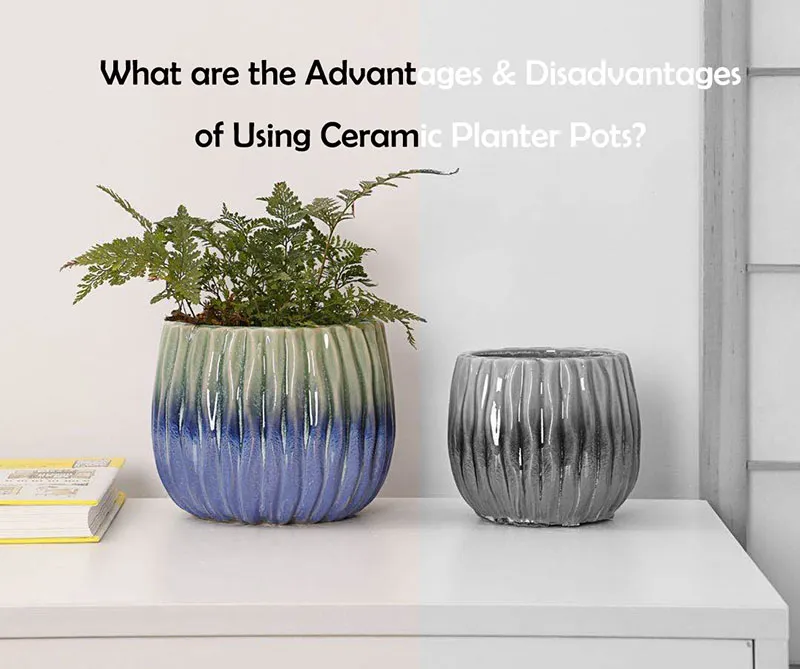
The disadvantages of using ceramic pots for home decor include:
- Drainage Drawbacks: Most ceramic pots tend to have fewer drainage holes, which can lead to problems with water flow and over-absorption, potentially causing issues for plant health.
- Maintenance: Ceramic pots require more care and attention compared to other materials, as they can be prone to chipping, cracking, and damage if not handled gently.
- Watering Frequency: Ceramic pots may require more frequent watering compared to other materials, as they can absorb moisture from the soil, leading to the need for more regular watering to maintain plant health.
- Air and Water Flow Restrictions: Glazed ceramic pots can restrict air and water flow, potentially affecting plant health and growth if not selected carefully.
These factors should be considered when choosing ceramic pots for home decor to ensure optimal plant care and longevity of the pots themselves.
What are some alternatives to ceramic pots for home decor?
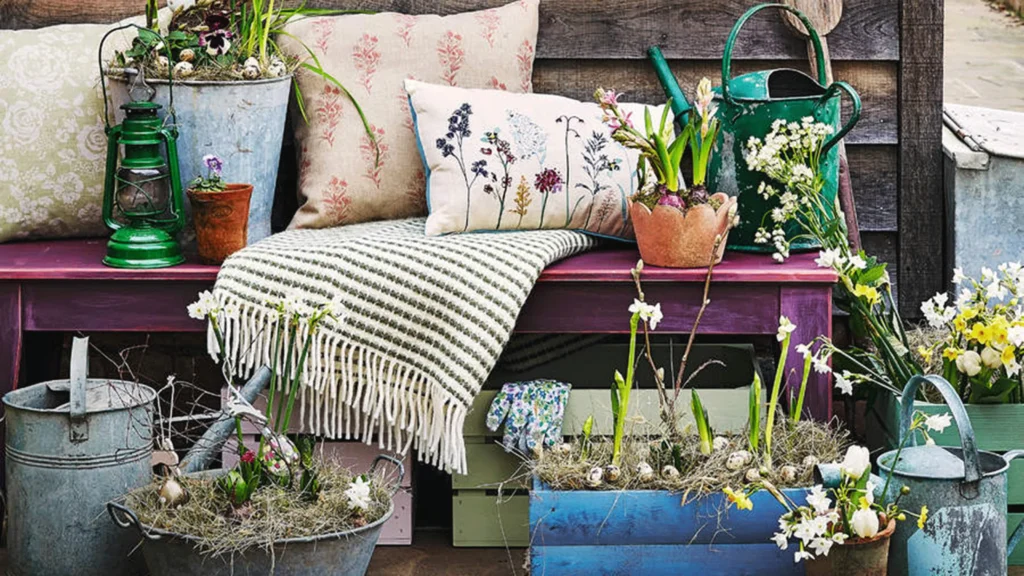
Some alternatives to ceramic pots for home decor include:
- Plastic Pots: These are lightweight, inexpensive, and come in a variety of colors and styles. They are also easy to clean and maintain, making them a popular choice for indoor and outdoor use.
- Terracotta Pots: These are made from natural clay and are porous, allowing for good airflow and water absorption. They are also eco-friendly and can help shield plants from drastic and sudden temperature shifts, protecting them from excess heat absorption during hot days and helping to retain moisture in the soil on intensely hot days.
- Wooden Pots: These give a natural and traditional look and can last for many years if properly cared for. They are also biodegradable and can be used as a sustainable option for planting.
- Metal Pots: These add a modern or industrial look and are available in various finishes, including copper, brass, and stainless steel. They are also durable and can withstand extreme temperatures.
- Concrete Pots: These are durable and weather-resistant, with a natural, earthy appearance and can support heavy plants.
- Vertical Pots and Cabinets: These are specifically designed for creating vertical gardens and are ideal for small spaces such as balconies or small yards.
- Hanging Pots: These do not need much space and are ideal for growing beautiful flowers in small spaces, but they need regular watering due to low water retention capacities.
- Railing Planters: These provide an easy and effective way to grow plants without much space and are ideal for growing different flowers like roses, marigold, and lilies.
- Decorative Pots and Urn Planters: These are eye-catching and provide an enhanced look to the garden, and large-sized urn planters may be difficult to move but can retain more water for a long time and provide great support to the plants.
- Coir Pots: These are made from coconut fibre and are an excellent option if looking for biodegradable planters, offering a great medium for the growth of plants with high porosity and efficient drainage.
These alternatives offer various benefits and drawbacks, and it is essential to consider factors such as plant health, maintenance, and aesthetics when selecting the right pot for home decor.
What are some creative ways to use flower pots in home decor?
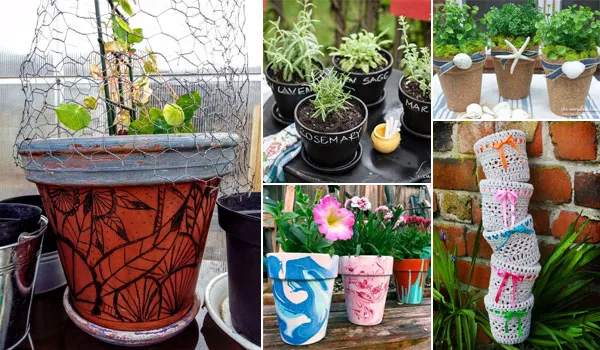
Flower pots can be used for a variety of creative purposes beyond just gardening. Here are some ideas:
- Bird Feeder: Use a flower pot, two clay saucers, and a plastic bottle to create a DIY bird feeder that adds charm to your outdoor space.
- Party-Themed Flower Pots Condiment Station: Paint flower pots according to your party or holiday theme to create a utensil and condiment station for your next gathering.
- Plunger Holder: Use a pretty flower pot as a plunger holder to add a touch of whimsy to your bathroom.
- Outdoor Cooker: Turn a clay pot into an outdoor cooker for smoked meat, fish, or s’mores.
- Gumball Machine: Create a gumball machine-inspired candy holder using a terra-cotta pot and saucer for a fun gift or decoration.
- Flowerpot PinCushion: Make a flowerpot pin cushion for a functional and decorative addition to your sewing area.
- Rain Catcher: Flower pots can be used to catch rainwater for watering plants or other purposes.
- Indoor Storage: Use clay pots as storage containers inside your home for toys, fireplace kindling, bathroom or kitchen essentials, or kitchen utensils.
- Utensil Storage: Dress up some flower pots as utensil holders for your next outdoor party.
- Bird Bath: Stack several painted pots together to form a bird bath.
- Address Number Display: Paint your house number on clay pots to display your address.
- Candle Holder: Turn a clay pot upside down, top it with a clay saucer, and set a pillar candle on top for a rustic candle holder.
- DIY Centerpiece: Create a French-inspired pot for your indoor plants or use decorated pots for storage throughout your home.
- Yard Art: Make yard art out of flower pots, such as frogs, butterflies, minions, and ladybugs, to hold napkins, utensils, and other picnic/outdoor eating items.
- Rock Garden: Use flower pots to create a rock garden for a low-maintenance decoration.
- Organizer: Clean up and use flower pots for organizing areas of your home, such as storing extra towels and washcloths, office supplies, kitchen utensils, or toys.
- Wreath: Make a wreath using flower pots for a unique decoration.
These are just a few ideas to get you started. Flower pots offer endless possibilities for creative use in home decor.
How to clean flower pots for home decor?
To clean flower pots for home decor, follow these steps:
- Remove old soil and debris: Before cleaning, remove any old soil and debris from the pot. This can be done by gently scraping it out with a plastic scraper or brush.
- Wash with soapy water: For a quick cleaning of the outside of clay pots, use warm soapy water and a sponge or brush to remove dirt and prevent mineral buildup.
- Scrub inside the pot: For a deeper clean, scrub the inside of the pot with a brush, using a solution of one part bleach to nine parts water. This will help remove any residual bacteria or fungi.
- Rinse thoroughly: After cleaning, rinse the pot thoroughly with water to remove any remaining soap or bleach solution.
- Dry completely: Allow the pot to dry completely before using it again, as moisture can lead to mold and mildew growth.
For specific materials, consider the following:
- Terra cotta pots: To clean terra cotta pots, use a solution of one part bleach to nine parts water to scrub the inside of the pot, then rinse and dry thoroughly.
- Ceramic pots: For ceramic pots, use warm soapy water and a sponge or brush to clean the outside and inside of the pot. Rinse and dry completely before use.
- Plastic pots: For plastic pots, use warm soapy water and a sponge or brush to clean the pot. Rinse and dry completely before use.
Remember to always check the care instructions for your specific pot material before cleaning.
Conclusion:
Choosing the right home decor flower pots for your US home doesn’t have to be a daunting task. By considering the type, size, and material of the pot, you can make an informed decision that will complement your home’s decor and provide the perfect environment for your plants. Don’t be afraid to get creative and add your own personal touch to your pots. Happy decorating!
FAQs:
A: The best material for flower pots depends on the plant’s needs and the location of the pot. Porous materials, such as terracotta and unglazed ceramic, are great for plants that require good air circulation and water drainage. Non-porous materials, such as plastic and glazed ceramic, are great for plants that require less watering and moisture retention.
A: When choosing the right size flower pot, it’s important to consider the size of the plant and the pot’s drainage capabilities. A pot that is too small can restrict the plant’s growth, while a pot that is too large can lead to overwatering. For indoor plants, it’s best to choose a pot that is 1-2 inches larger than the current pot. For outdoor plants, it’s best to choose a pot that is 2-4 inches larger than the current pot.
A: When styling flower pots, it’s important to consider the overall decor of your home. Group pots of different sizes and shapes together for a dynamic look. Use a variety of materials, such as ceramic, plastic, and metal, to add texture and interest. Add decorative elements, such as ribbons, stickers, and paint, to personalize your pots. Use a variety of colors to complement your home’s decor.
